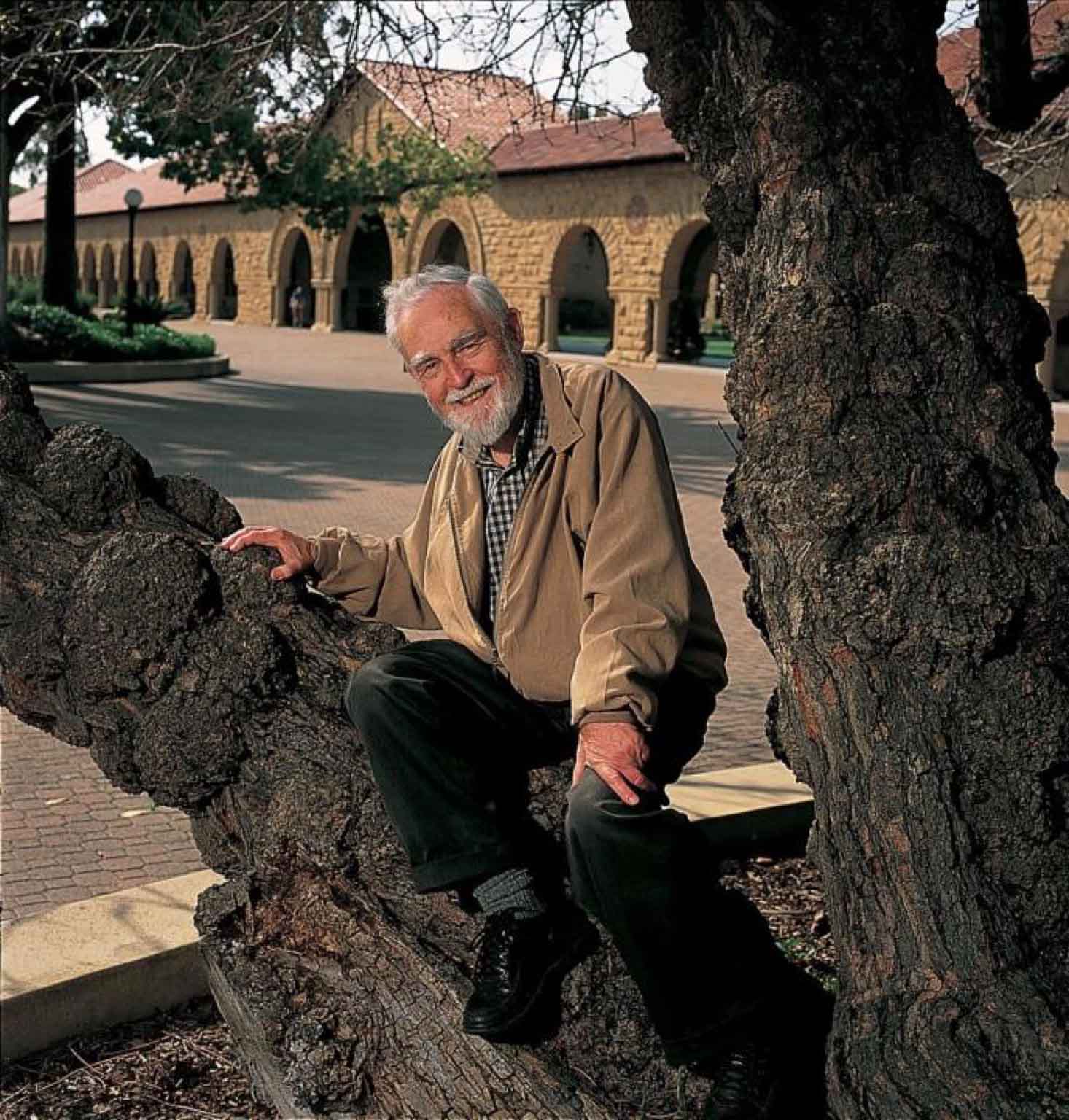Ronald N. Bracewell

“… if people try to become acquainted with their trees, it would enhance their lives.”– Ron Bracewell (1921–2007)
Visitors to the Stanford campus – and not infrequently those of us who live here – seek help in identifying some unusual tree or other, picked out from the extraordinary variety of native and exotic trees planted here. In most places, such an inquiry would quickly generate a referral to the Biology Department. Here, although we have some biologists who are pretty good on trees, the questioner is much more likely to be sent to the Terman Professor of Electrical Engineering, emeritus. Ron Bracewell knows them all, knows where they came from, and why they got planted here. He’s just amazing.…
The extraordinary depth of Bracewell’s treatment will surely raise a question for the reader: Why did an electrical engineer become such a fountainhead of arboreal information? The way he tells it, that started in a second-grade elementary school class in nature study, in the Sydney suburb in which he spent his boyhood. They went outdoors into the field, and soon young Bracewell was collecting caterpillars along with the leaves from the plants on which they were found. Once you start with insects, you have to start thinking about what they’re eating – and that led naturally to a deepening familiarity with plants. That developing youthful curiosity eventually grew into something so relentless that, once at Stanford, Bracewell pursued the task of identifying every one of the campus trees – taking time from a distinguished career in a science that was as different from botany as it could possibly be.
If you know this campus, however, another connection between Stanford’s trees and Bracewell’s interest begins to emerge – accompanied by a wisp of nostalgia. For reasons having quite a lot to do with California history and plantation experiments, we have lots of eucalyptus trees – dozens of species. They are, of course, native to Australia, and Ron and Helen Bracewell naturally took a special interest in them – extending beyond identification to the planting of several kinds that had not already been established. Read the accounts of the campus eucalypts in this book and you will get the very special flavor of the volatile oils the different species produce, as well as the loving concern Ron has for each one.
Trees of Stanford and Environs is very much more than an identification guide. It is a remarkable storehouse of information on the systematics and general biology of the trees described. It is authoritative, thoughtful, and engaging – not only in its scientific quality but in the wonderful way it has captured so much of the associated history. You can find unexpected things here: the insect problems with the eucalptus trees the Board of Trustees had planted across Galvez Street from the Stadium; the attempts in World War II to harvest cork from campus cork oaks; the 1891 memo from Senator Stanford to David Starr Jordan insisting on native oak names for the men’s and women’s dormitories. What we have here, in short, is a treasure-trove that invites exploration.
– Donald Kennedy
President, Stanford University, 1980–1992
From the Foreword to Trees of Stanford and Environs


